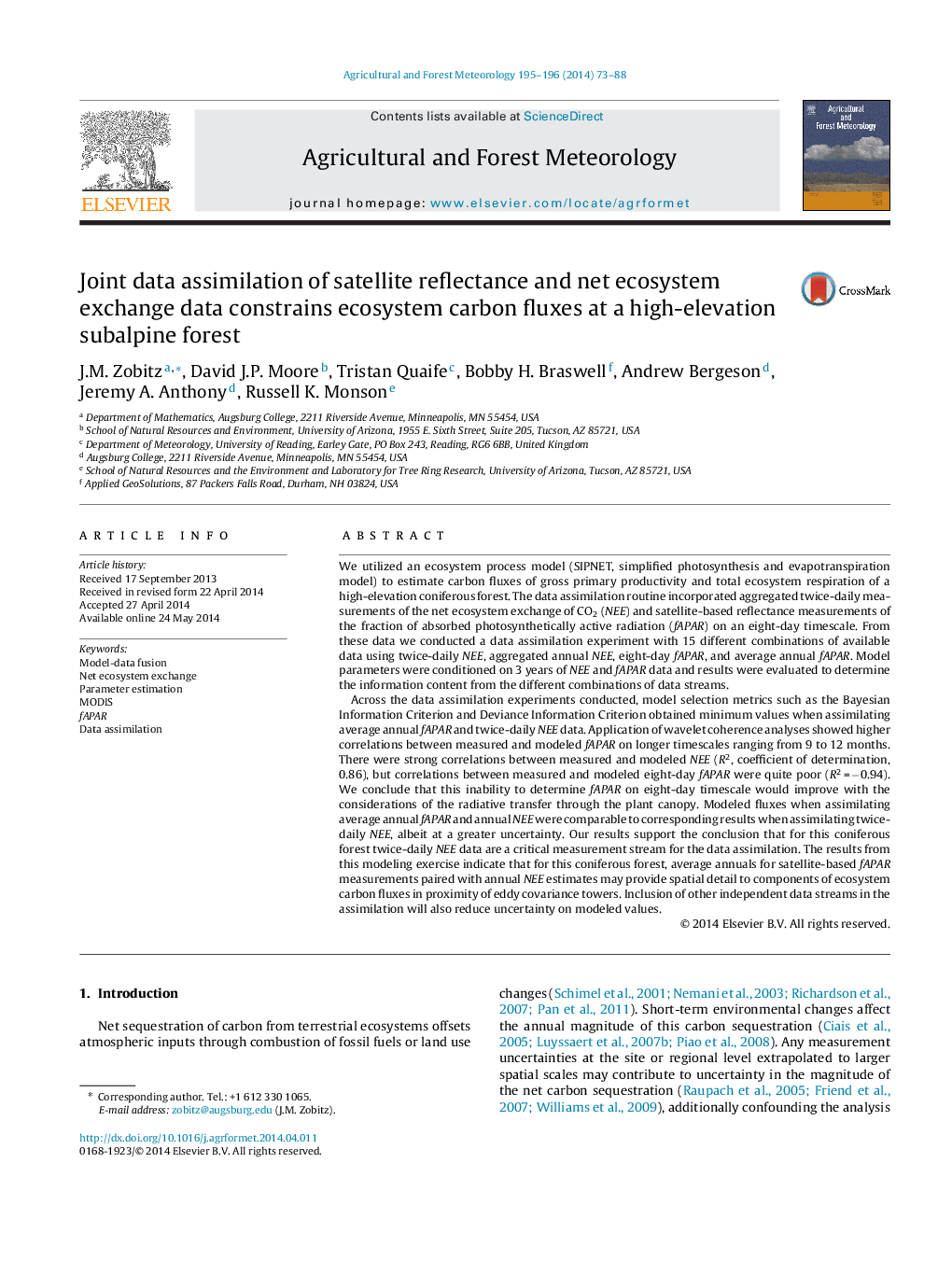| Article ID | Journal | Published Year | Pages | File Type |
|---|---|---|---|---|
| 81729 | Agricultural and Forest Meteorology | 2014 | 16 Pages |
•NEE and satellite reflectance data constrain terrestrial ecosystem carbon fluxes.•Wavelet analyses show correlation of modeled values across multiple timescales.•The most parsimonious model-data assimilation was with twice-daily NEE and average annual fAPAR satellite data.
We utilized an ecosystem process model (SIPNET, simplified photosynthesis and evapotranspiration model) to estimate carbon fluxes of gross primary productivity and total ecosystem respiration of a high-elevation coniferous forest. The data assimilation routine incorporated aggregated twice-daily measurements of the net ecosystem exchange of CO2 (NEE) and satellite-based reflectance measurements of the fraction of absorbed photosynthetically active radiation (fAPAR) on an eight-day timescale. From these data we conducted a data assimilation experiment with 15 different combinations of available data using twice-daily NEE, aggregated annual NEE, eight-day fAPAR, and average annual fAPAR. Model parameters were conditioned on 3 years of NEE and fAPAR data and results were evaluated to determine the information content from the different combinations of data streams.Across the data assimilation experiments conducted, model selection metrics such as the Bayesian Information Criterion and Deviance Information Criterion obtained minimum values when assimilating average annual fAPAR and twice-daily NEE data. Application of wavelet coherence analyses showed higher correlations between measured and modeled fAPAR on longer timescales ranging from 9 to 12 months. There were strong correlations between measured and modeled NEE (R2, coefficient of determination, 0.86), but correlations between measured and modeled eight-day fAPAR were quite poor (R2 = −0.94). We conclude that this inability to determine fAPAR on eight-day timescale would improve with the considerations of the radiative transfer through the plant canopy. Modeled fluxes when assimilating average annual fAPAR and annual NEE were comparable to corresponding results when assimilating twice-daily NEE, albeit at a greater uncertainty. Our results support the conclusion that for this coniferous forest twice-daily NEE data are a critical measurement stream for the data assimilation. The results from this modeling exercise indicate that for this coniferous forest, average annuals for satellite-based fAPAR measurements paired with annual NEE estimates may provide spatial detail to components of ecosystem carbon fluxes in proximity of eddy covariance towers. Inclusion of other independent data streams in the assimilation will also reduce uncertainty on modeled values.
Graphical abstractFigure optionsDownload full-size imageDownload as PowerPoint slide
